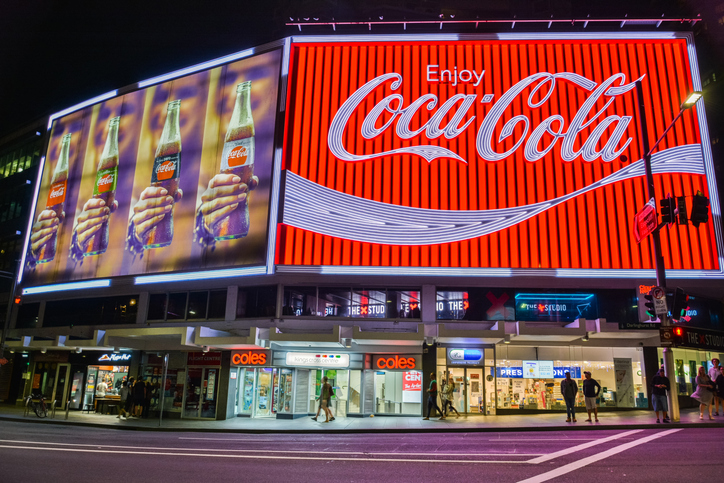Why Iconic Brands Struggle With Innovation
When a company markets its product’s long, iconic heritage, consumers are reluctant to buy a new variation
Emphasising a product’s heritage can be a powerful marketing tool. Think of brands like Coca-Cola or Converse’s Chuck Taylor All Star sneakers.
But the strategy could have a big drawback, according to research . When a brand emphasises its past, customers are less likely to buy its updates and innovations. A food company that heavily promotes its classic recipe, for instance, could have a tough time getting customers to buy a new variation on the product. The reluctance is particularly strong if people think the brand has stood the test of time and is authentic the way it is.
When you change an original product, it challenges why many people like the product in the first place, says Rosanna Smith, an associate professor at the University of Illinois Urbana-Champaign and one of the paper’s co-authors.
“We call it the curse of the original, and the question is how to update a product that is considered an icon without enraging your customers,” says Smith.
The shock of the new
In one part of the study, 418 participants read about a fictional hand-cream company and its top lotion. Participants were either told the company was established in 1917 with “deep roots in the old world French apothecary” or that it was established in 2017. Then the participants were either told the hand lotion was developed when the company was founded or was a new and improved version of the original.
All participants tried the same lotion and rated it on a nine-point scale, with nine being most favourable. When it came to the 1917 company, people rated the classic formula much higher than the new one: The original got a 6.68, while the new one averaged only 6.09. In other words, people didn’t like a venerable brand that tried to innovate as much as a brand that stuck to its roots.
Meanwhile, participants who were told the company started in 2017 rated the original and improved hand creams similarly.
“One big limitation of heritage branding is that it makes it harder to innovate,” says Smith. “But there are ways to lessen the effect.”
Back to basics
For instance, in another experiment, 602 participants read about Fratellino, a fictional Italian-food brand launched in 1911 when founder Martina Fratellino began selling tomato sauce from her front porch. The participants were told the brand would be improving its original tomato-sauce recipe.
The people were then divided into three groups. The control group was told the company was proud to introduce the new formula. The second group was told the new sauce was a bold departure from the original recipe, while the third was told the change was inspired by traditional techniques Martina used to create her tomato sauce in 1911 and that the change was a return to the company’s beginnings.
The authors found that participants in the control group rated the new tomato sauce less favourably than the original, giving it a score of 6.0, compared with 7.2 for the original. Simply doing something novel hurt the tradition-heavy company. The new product did even worse among people who heard that it was a bold departure: The new item got a 5.57, compared with 7.19 for the original.
But in the third group, where the change was framed as grounded in the product’s origins, the scores for the original and new tomato sauces didn’t significantly differ.
“Stressing the connection to the brand’s origins may have made the update seem more authentic,” says Smith.
 Copyright 2020, Dow Jones & Company, Inc. All Rights Reserved Worldwide. LEARN MORE
Copyright 2020, Dow Jones & Company, Inc. All Rights Reserved Worldwide. LEARN MORE
A divide has opened in the tech job market between those with artificial-intelligence skills and everyone else.
A 30-metre masterpiece unveiled in Monaco brings Lamborghini’s supercar drama to the high seas, powered by 7,600 horsepower and unmistakable Italian design.
A divide has opened in the tech job market between those with artificial-intelligence skills and everyone else.
There has rarely, if ever, been so much tech talent available in the job market. Yet many tech companies say good help is hard to find.
What gives?
U.S. colleges more than doubled the number of computer-science degrees awarded from 2013 to 2022, according to federal data. Then came round after round of layoffs at Google, Meta, Amazon, and others.
The Bureau of Labor Statistics predicts businesses will employ 6% fewer computer programmers in 2034 than they did last year.
All of this should, in theory, mean there is an ample supply of eager, capable engineers ready for hire.
But in their feverish pursuit of artificial-intelligence supremacy, employers say there aren’t enough people with the most in-demand skills. The few perceived as AI savants can command multimillion-dollar pay packages. On a second tier of AI savvy, workers can rake in close to $1 million a year .
Landing a job is tough for most everyone else.
Frustrated job seekers contend businesses could expand the AI talent pipeline with a little imagination. The argument is companies should accept that relatively few people have AI-specific experience because the technology is so new. They ought to focus on identifying candidates with transferable skills and let those people learn on the job.
Often, though, companies seem to hold out for dream candidates with deep backgrounds in machine learning. Many AI-related roles go unfilled for weeks or months—or get taken off job boards only to be reposted soon after.
Playing a different game
It is difficult to define what makes an AI all-star, but I’m sorry to report that it’s probably not whatever you’re doing.
Maybe you’re learning how to work more efficiently with the aid of ChatGPT and its robotic brethren. Perhaps you’re taking one of those innumerable AI certificate courses.
You might as well be playing pickup basketball at your local YMCA in hopes of being signed by the Los Angeles Lakers. The AI minds that companies truly covet are almost as rare as professional athletes.
“We’re talking about hundreds of people in the world, at the most,” says Cristóbal Valenzuela, chief executive of Runway, which makes AI image and video tools.
He describes it like this: Picture an AI model as a machine with 1,000 dials. The goal is to train the machine to detect patterns and predict outcomes. To do this, you have to feed it reams of data and know which dials to adjust—and by how much.
The universe of people with the right touch is confined to those with uncanny intuition, genius-level smarts or the foresight (possibly luck) to go into AI many years ago, before it was all the rage.
As a venture-backed startup with about 120 employees, Runway doesn’t necessarily vie with Silicon Valley giants for the AI job market’s version of LeBron James. But when I spoke with Valenzuela recently, his company was advertising base salaries of up to $440,000 for an engineering manager and $490,000 for a director of machine learning.
A job listing like one of these might attract 2,000 applicants in a week, Valenzuela says, and there is a decent chance he won’t pick any of them. A lot of people who claim to be AI literate merely produce “workslop”—generic, low-quality material. He spends a lot of time reading academic journals and browsing GitHub portfolios, and recruiting people whose work impresses him.
In addition to an uncommon skill set, companies trying to win in the hypercompetitive AI arena are scouting for commitment bordering on fanaticism .
Daniel Park is seeking three new members for his nine-person startup. He says he will wait a year or longer if that’s what it takes to fill roles with advertised base salaries of up to $500,000.
He’s looking for “prodigies” willing to work seven days a week. Much of the team lives together in a six-bedroom house in San Francisco.
If this sounds like a lonely existence, Park’s team members may be able to solve their own problem. His company, Pickle, aims to develop personalised AI companions akin to Tony Stark’s Jarvis in “Iron Man.”
Overlooked
James Strawn wasn’t an AI early adopter, and the father of two teenagers doesn’t want to sacrifice his personal life for a job. He is beginning to wonder whether there is still a place for people like him in the tech sector.
He was laid off over the summer after 25 years at Adobe , where he was a senior software quality-assurance engineer. Strawn, 55, started as a contractor and recalls his hiring as a leap of faith by the company.
He had been an artist and graphic designer. The managers who interviewed him figured he could use that background to help make Illustrator and other Adobe software more user-friendly.
Looking for work now, he doesn’t see the same willingness by companies to take a chance on someone whose résumé isn’t a perfect match to the job description. He’s had one interview since his layoff.
“I always thought my years of experience at a high-profile company would at least be enough to get me interviews where I could explain how I could contribute,” says Strawn, who is taking foundational AI courses. “It’s just not like that.”
The trouble for people starting out in AI—whether recent grads or job switchers like Strawn—is that companies see them as a dime a dozen.
“There’s this AI arms race, and the fact of the matter is entry-level people aren’t going to help you win it,” says Matt Massucci, CEO of the tech recruiting firm Hirewell. “There’s this concept of the 10x engineer—the one engineer who can do the work of 10. That’s what companies are really leaning into and paying for.”
He adds that companies can automate some low-level engineering tasks, which frees up more money to throw at high-end talent.
It’s a dynamic that creates a few handsomely paid haves and a lot more have-nots.
Once a sleepy surf town, Noosa has become Australia’s prestige property hotspot, where multi-million dollar knockdowns, architectural showpieces and record-setting sales are the new normal.
In the remote waters of Indonesia’s Anambas Islands, Bawah Reserve is redefining what it means to blend barefoot luxury with environmental stewardship.























